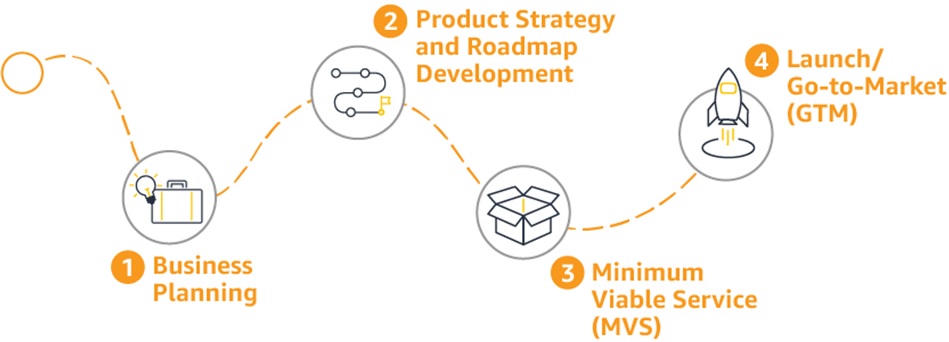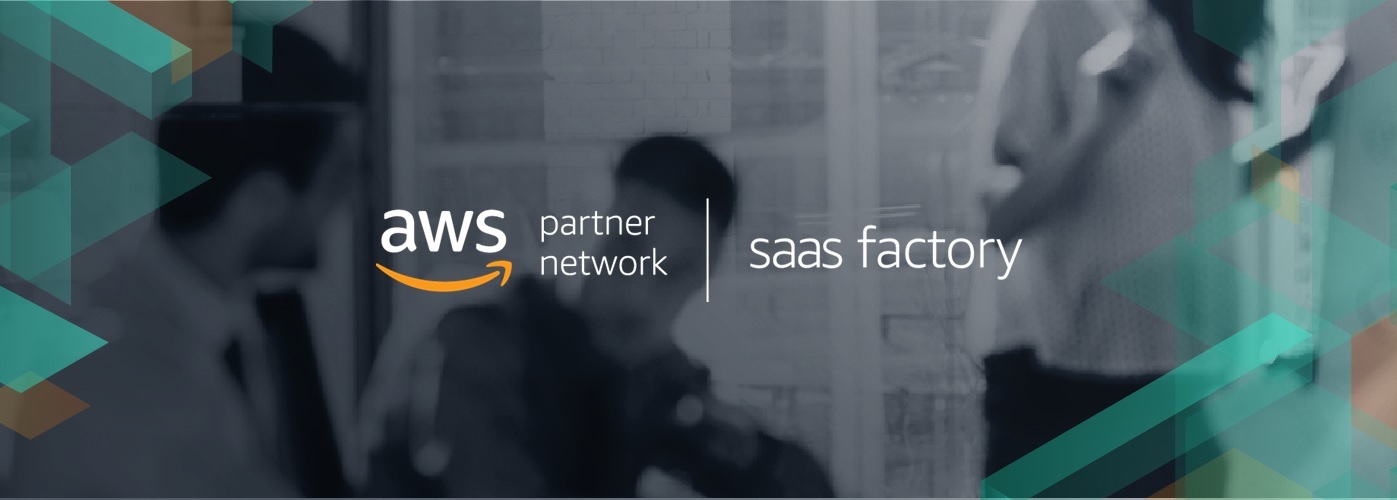AWS Partner Network (APN) Blog
Explore the SaaS Journey Framework in New AWS Whitepaper
By Oded Rosenmann, SaaS Business Lead at AWS
 The software-as-as-service (SaaS) delivery model has become increasingly appealing to a wide range of companies.
The software-as-as-service (SaaS) delivery model has become increasingly appealing to a wide range of companies.
While new and existing application providers are anxious to reap the rewards that are associated with this delivery model, the journey to SaaS can have a large impact on a business.
For many, the move to SaaS represents a significant transformational event that requires companies to examine all the moving parts of their business. How products are sold, marketed, built, supported, and monetized—these are amongst a long list of considerations every company must evaluate as they set out to define, build, and operate an as-a-service business.
As a SaaS Business Lead for AWS SaaS Factory, I have worked with organizations looking for guidance and best practices to help them build, grow, and optimize SaaS solutions on AWS. Based upon this feedback and our experience with thousands of AWS Partners across the world, we have created a new SaaS Journey Framework whitepaper.
This new whitepaper introduces a prescriptive framework to guide you through a SaaS journey on AWS. It also provides targeted guidance representing the patterns and strategies we have observed across our efforts to support other SaaS businesses.
In this post, I will provide a high-level view of the core concepts covered in the whitepaper. If you’re a business or technical stakeholder building a new SaaS product, transitioning to a SaaS business model from traditional software and technology delivery models, or optimizing an existing SaaS solution, we recommend you read the whitepaper.
The Business Journey to SaaS on AWS
A movement to a SaaS model often requires a fundamental shift in strategic and operational mindset. It forces companies to rethink roles and responsibilities, define cultural change, and introduce new processes that align with the best practices of SaaS companies.
It’s not easy to make a big shift like this—if you don’t prepare your organization and extend your product vision to the service model, you can make a progress, but it will be a small progress, and you will not achieve the full SaaS value proposition.
We created the SaaS Journey Framework whitepaper to help companies extend their vision beyond technology strategy, putting a greater emphasis on a business model that creates an excellent customer experience.
BMC, an AWS Advanced Technology Partner, is one of the organizations which inspired our team to create this whitepaper. In working with the BMC team on BMC Helix-Control-M, a SaaS solution for application workflow orchestration, we realized there was an opportunity to take best practices and shape them into a model that can be followed by other companies.
We spent more than a year engaging with BMC in a series of business and technical workshops, and learned a great deal as they planned and managed their transformation journey and the launch of BMC Helix-Control-M.
Cohesity, an AWS Advanced Technology Partner, is a Series E funded software-defined data management startup that provides hyperconverged secondary storage solutions to enterprise and mid-market customers.
Cohesity expanded their portfolio with the launch of the Data Management as a Service (DMaaS) solutions on AWS. Through the development and launch of this new SaaS offering, Cohesity leveraged the best practices outlined in the SaaS Journey Framework, to be implemented both pre- and post- launch.
Our hope is to share the lessons we have learned from these and other engagements as a structured framework, to help organizations navigate their own journey to SaaS on AWS.
The SaaS Journey Framework breaks down the path to SaaS into four distinct phases, each of which represents a key stage in the move to SaaS:
- Business planning
- Product strategy and roadmap development
- Minimum viable service (MVS)
- Launch and go-to-market (GTM)
The framework is a dynamic working process that’s not necessarily linear. While working on the product strategy, for example, you might revisit your business case and update it. Some activities, meanwhile, may take place simultaneously.
Our whitepaper guides you through the four framework phases, and helps you build a strategy and execution plan by outlining the key activities and questions to consider along the SaaS journey. It can be used as a validation point, in whole or in part, to develop your own plan.
Company Profiles
In the AWS SaaS Factory program, we have worked with many organizations around the world, and one thing we’ve come to understand is the journey to SaaS is different for each company.
Where you’re starting, what domain you’re in, what competitive pressures you’re facing—the answers to these questions can influence the path you take on your SaaS journey. Therefore, we have identified a few of the common profiles for companies that adopted a SaaS delivery model.
As we move through the phases of the journey, we can use these SaaS profiles to explore how the journey may vary for each of these company types.
The SaaS Journey Framework whitepaper outlines the following list of hypothetical profiles that represent the typical starting points for companies moving to SaaS, and how the journey might vary for each of these company types.
- ToeDipper Software – This profile represents a large and conservative company running a legacy product hindered by an aging technology and/or process, but has a captive, lucrative market.
- SurvivorTech – This profile represents the companies that have an existing product but are seeing their market being eroded by competitors that have used price, agility, and/or cost efficiency to capture mindshare.
- UnicornExpress.com – This profile represents the greenfield SaaS companies that are building their solution from scratch and setting out on the path to SaaS without the baggage of an existing legacy environment.
- New Horizons Software – This profile represents companies for which the move to SaaS is more about identifying and exploring some new market segment that’s not addressed by their existing offering.
How you approach the key activities of the four phases of the SaaS journey will be different for each company. The figure below visualizes the SaaS objectives of each company profile upon the criteria of time to market and business goal.
Exploring the Whitepaper
This post provides a high-level view of some of the fundamental topics covered by the new SaaS Journey Framework whitepaper. The paper itself provides a much deeper coverage of key activities in the four phases of the journey, and the guiding questions that can help you fill in important dimensions of these effort.
The key takeaway is that through all of the four phases in the journey to SaaS, there are common themes that will likely be part of each phase, regardless of your organization profile.
At the top of this list is the notion of organizational and cultural change. At each step in this process, you are likely to be making decisions that require changes in how your teams are organized, how they work together, and how they adopt a new culture as part of moving to a SaaS delivery model.
For many organizations, this move to SaaS is more about changing how they think and operate as a business. This is all part of our guidance for them to think more like a service company and less like a product company.
While we present here a sequenced flow of your journey, it’s important to let your customers, both present and future, be your ultimate guide. Leverage this framework in whole or in part. Take what you need. Leave the rest. We don’t mind. And let us know how we can help.
To further explore the details highlighted here, please take a look at the new SaaS Journey Framework whitepaper.
About AWS SaaS Factory
AWS SaaS Factory helps organizations at any stage of the SaaS journey. Whether looking to build new products, migrate existing applications, or optimize SaaS solutions on AWS, we can help. Visit the AWS SaaS Factory Insights Hub to discover more technical and business content and best practices.
SaaS builders are encouraged to reach out to their account representative to inquire about engagement models and to work with the AWS SaaS Factory team.
Sign up to stay informed about the latest SaaS on AWS news, resources, and events.



